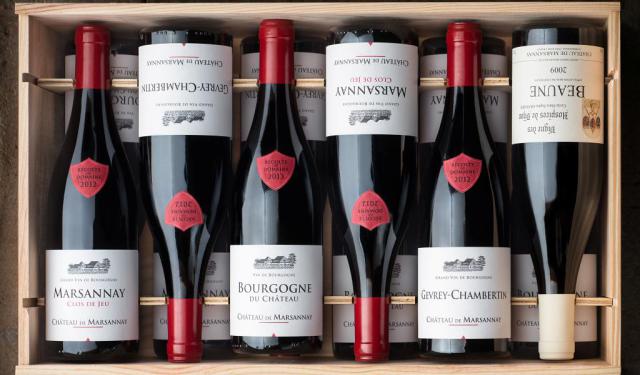
Chartreuse of Champmol and Well of Moise, Dijon
The Chartreuse of Champmol, founded by Philippe le Hardi in the late 14th century, served as the necropolis of the Dukes of Burgundy from the Valois line. This remarkable monastery, situated in Champmol became an influential artistic center where French and Northern European artists collaborated. Although the monastery was dismantled during the French Revolution, two significant works by the Flemish sculptor Claus Sluter have managed to survive: the portal of the church and the Well of Moses.
The portal of the church at the Chartreuse of Champmol is adorned with sculptures that depict the Duke Philip the Bold and his wife Margaret of Flanders. This impressive piece of artwork showcases the artistic collaboration between French and Northern European artists. The sculptures on the portal exemplify the artistic style and craftsmanship of the late 14th century, particularly the Burgundian-Flemish tradition.
However, the most renowned masterpiece of Claus Sluter at Champmol is the Well of Moses. Erected in the center of the large cloister, this extraordinary sculpture features majestic statues of King David and Moses, as well as the four prophets Isaiah, Daniel, Zacharias, and Jeremiah. The Well of Moses is characterized by its striking realism, demonstrating the exceptional skill and finesse of Burgundian-Flemish sculpture during the late 14th century.
The Well of Moses is an intricate and detailed work of art. Each figure is meticulously carved, capturing the individual personalities and emotions of the biblical figures. The realism and expressiveness of the sculptures make them come to life, inviting viewers to engage with the narrative and symbolism depicted. Sluter's masterful craftsmanship, evident in the intricate drapery, life like facial expressions, and dynamic poses, demonstrates his profound understanding of human anatomy and his ability to convey complex emotions through sculpture.
The portal of the church at the Chartreuse of Champmol is adorned with sculptures that depict the Duke Philip the Bold and his wife Margaret of Flanders. This impressive piece of artwork showcases the artistic collaboration between French and Northern European artists. The sculptures on the portal exemplify the artistic style and craftsmanship of the late 14th century, particularly the Burgundian-Flemish tradition.
However, the most renowned masterpiece of Claus Sluter at Champmol is the Well of Moses. Erected in the center of the large cloister, this extraordinary sculpture features majestic statues of King David and Moses, as well as the four prophets Isaiah, Daniel, Zacharias, and Jeremiah. The Well of Moses is characterized by its striking realism, demonstrating the exceptional skill and finesse of Burgundian-Flemish sculpture during the late 14th century.
The Well of Moses is an intricate and detailed work of art. Each figure is meticulously carved, capturing the individual personalities and emotions of the biblical figures. The realism and expressiveness of the sculptures make them come to life, inviting viewers to engage with the narrative and symbolism depicted. Sluter's masterful craftsmanship, evident in the intricate drapery, life like facial expressions, and dynamic poses, demonstrates his profound understanding of human anatomy and his ability to convey complex emotions through sculpture.
Want to visit this sight? Check out these Self-Guided Walking Tours in Dijon. Alternatively, you can download the mobile app "GPSmyCity: Walks in 1K+ Cities" from Apple App Store or Google Play Store. The app turns your mobile device to a personal tour guide and it works offline, so no data plan is needed when traveling abroad.
Chartreuse of Champmol and Well of Moise on Map
Sight Name: Chartreuse of Champmol and Well of Moise
Sight Location: Dijon, France (See walking tours in Dijon)
Sight Type: Attraction/Landmark
Sight Location: Dijon, France (See walking tours in Dijon)
Sight Type: Attraction/Landmark
Walking Tours in Dijon, France
Create Your Own Walk in Dijon
Creating your own self-guided walk in Dijon is easy and fun. Choose the city attractions that you want to see and a walk route map will be created just for you. You can even set your hotel as the start point of the walk.
Food and Wine Tour
Speaking of Burgundy, the first thing that springs to mind is wine. Indeed, Burgundy is one of the most prestigious wine regions in France, and its capital Dijon serves as a gateway to this renowned wine country. Dijon also boasts one of the most distinguished gastronomic pedigrees of any place in the world.
Start your gastronomic journey of the city at the Municipal Library (Bibliothèque... view more
Tour Duration: 1 Hour(s)
Travel Distance: 1.9 Km or 1.2 Miles
Start your gastronomic journey of the city at the Municipal Library (Bibliothèque... view more
Tour Duration: 1 Hour(s)
Travel Distance: 1.9 Km or 1.2 Miles
Dijon Introduction Walking Tour
Nestled amid the undulating hills of Burgundy, the capital of the Côte-d'Or admistrative department of France, Dijon, exudes an aura of refinement.
The city's history dates back to Roman times when it was known as Divio. The name "Divio" itself may have roots in the Celtic word "divona" which means "sacred fountain." Over time, it has evolved to... view more
Tour Duration: 2 Hour(s)
Travel Distance: 2.3 Km or 1.4 Miles
The city's history dates back to Roman times when it was known as Divio. The name "Divio" itself may have roots in the Celtic word "divona" which means "sacred fountain." Over time, it has evolved to... view more
Tour Duration: 2 Hour(s)
Travel Distance: 2.3 Km or 1.4 Miles


